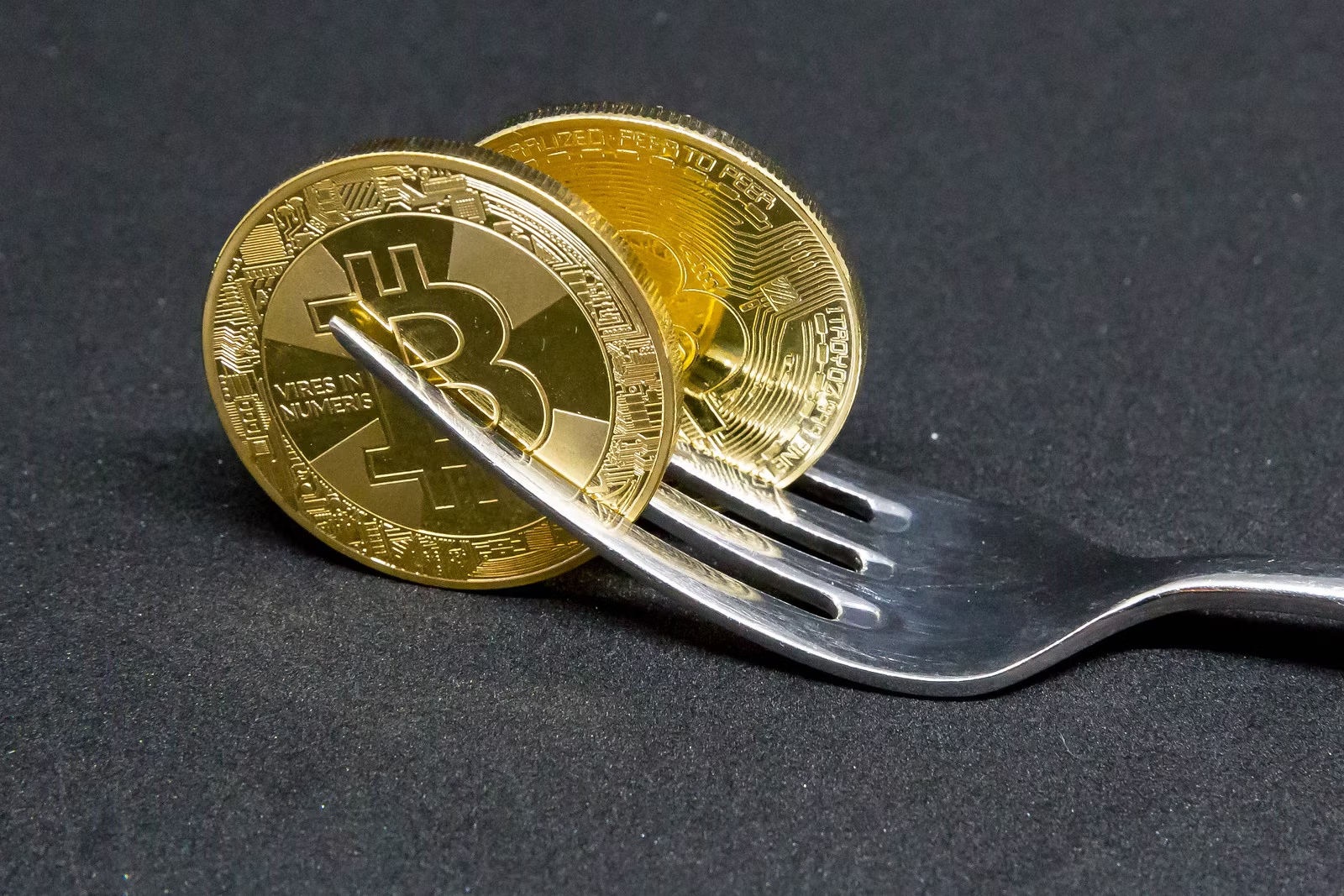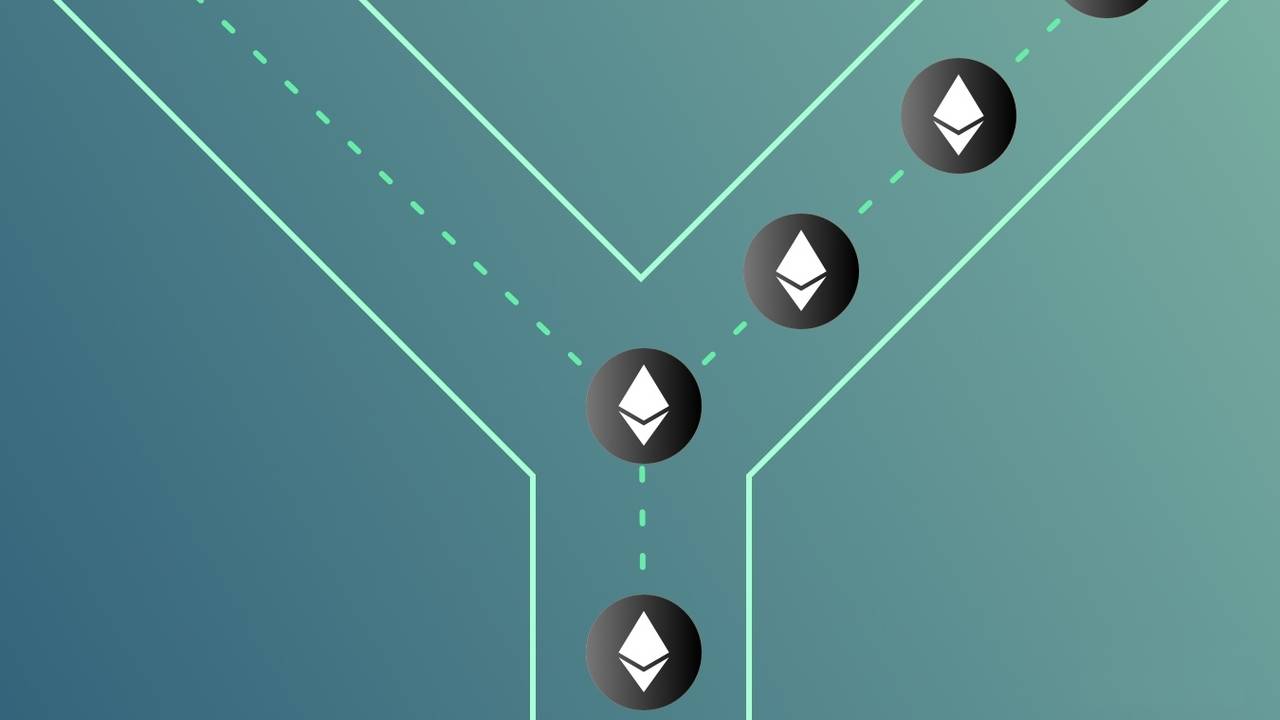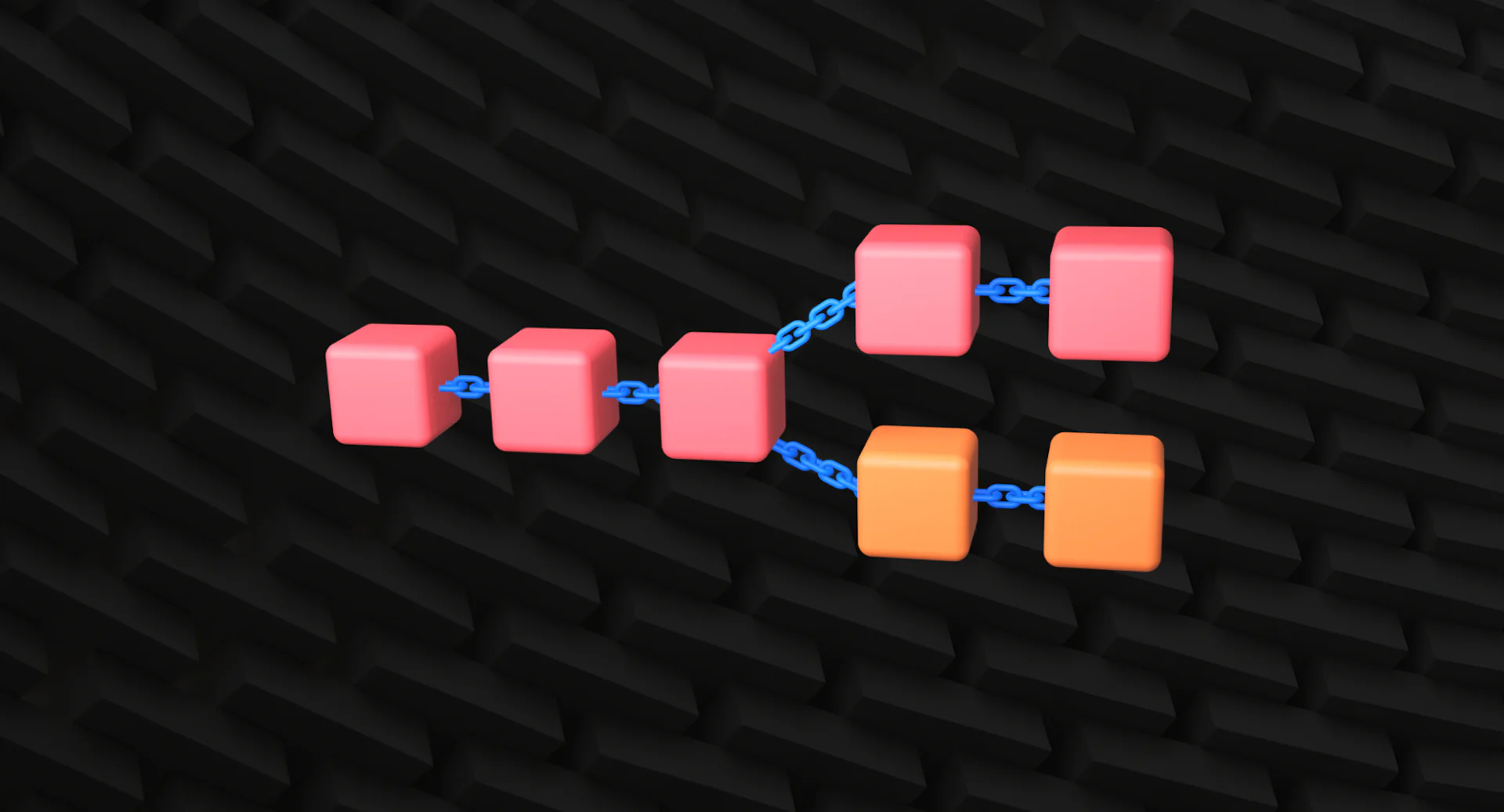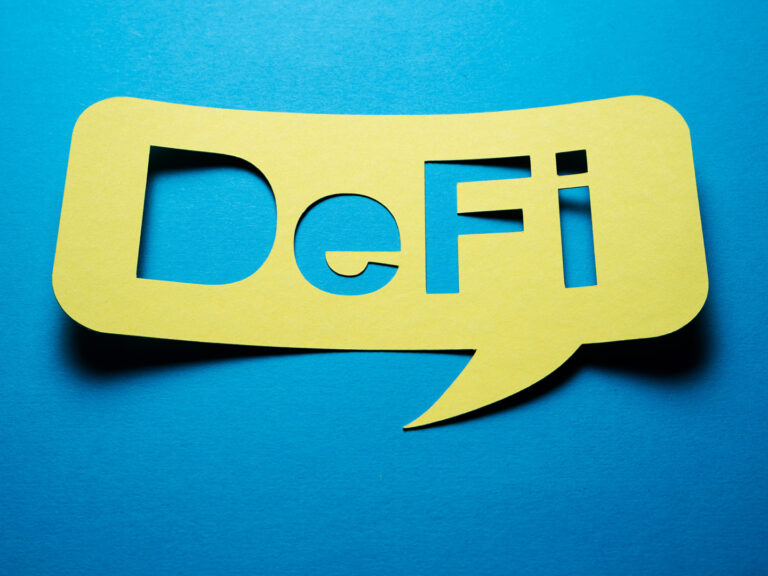What is a Blockchain Fork? Types, Risks and Benefits
If you’re interested in or an enthusiast of cryptocurrencies, you’ve probably seen coins that look like other well-known cryptocurrencies. There are thousands of them out there. Bitcoin and Bitcoin Cash are two examples. Ethereum Classic and Ethereum 2.0 are two examples of Ethereum. Why is this so?
Most likely, they’re different copies of a coin that was first made. They happen when the system of a blockchain is changed in a way called a “fork.” If you’re thinking about investing in crypto, whether it has been split or not, here’s what you need to know about these new blockchains.
What is a Blockchain Fork?
A blockchain fork happens when a blockchain splits into two lines that are not the same. There are different things that can cause forks. There are times when competing blocks are made by accident, which causes a brief split in the blockchain. Forks can also be changes that are made on purpose to the rules for making new blocks.
When everyone agrees on the change of rules. Intentional blockchain forks work like a software update for your web browser or PC operating system. We call this a “soft fork.”
If people don’t agree on how to change the rules, the blockchain splits into two separate chains that compete with each other. Each chain then follows its own version. This led to two different cryptocurrencies, one old and one new. We call this a “hard fork.”
Unintentional forks: Orphan, Uncle & Stale Blocks
A pseudo-random selection method chooses how to add a new block of transactions to the historical chain. There are many blockchain consensus mechanisms, but they all have this thing in common.
There are times when that selection process goes wrong and makes two new blocks instead of one. This makes two versions of the blockchain that are not compatible with each other:
- Orphan or old blocks are made when two miners send in good new blocks at the same time. This makes two links that compete with each other until most of the nodes drop one of them.
- Uncle blocks—Before Merge, Ethereum made it possible to mine two blocks at the same time. The block with the higher proof of work (PoW) was added to the chain first. Post-Merge under PoS, block proposers are already chosen, so this quirk is no longer there.

Types of Blockchain Forks
Soft forks and hard forks are the two kinds of blockchain forks.
Changes to the system that runs a blockchain can have different levels of importance. At times, it’s just a small update, like fixing a bug. At other times, it can be a big change to the whole system.
If the changes make the protocol work very differently from the original, then the new protocol might split from the old one. This would mean that there are now two separate protocols, which would mean that there are now two separate blockchains and coins. This is what makes a “hard fork” different from a “soft fork.”
- Soft Fork: The protocol has been changed slightly so that it can still work with the old protocol. In other words, computers that don’t update to the new system will still be able to use it.
- Hard Fork. The new blockchain and the old blockchain are now permanently split apart. This makes two different blockchains that work at the same time. After the hard fork, if you have coins in the old blockchain, you’ll probably have the same number of coins in the new blockchain.
What is a Soft Fork?
When an intentional change is made to a blockchain’s consensus process that works with older versions, this is called a “soft fork.” It’s possible that the change will fix a security bug, make something work better, or add something new.
You can think of soft forks as updates for your web browser or computer’s running system. Nodes don’t have to update their client software, but if they don’t, they can’t be a Miner or Validator anymore, which means they can’t suggest new blocks or earn rewards.
Since the old and new rules work with the system, soft forks don’t break a chain. This is called backwards compatibility. You can think of this as using an old operating system on your phone; it still works, but the changes don’t help it.
Soft Fork’s Improvement Proposals
Nodes run client software that follows the blockchain’s rules for how it works, which are called its protocol. Blockchains are open, and so are their protocols. This means that anyone can offer a big fix, a small change, or an upgrade to a feature.
Using Bitcoin as an example, the process for controlling system changes is meant to be open to everyone. The process lets the community make decisions about changes that help the system grow while also making it more secure and useful.
New changes are put forward in named Bitcoin Improvement Proposals (BIPs). In 2011, the first BIP set a standard for how to submit BIPs.
You can find a full list of BIPs on Github, with soft forks shown in quotes. Here are a few of the most important ones:
- Segregated Witness (BIP 141): Better scaling by letting more transactions fit into a single block with Segregated Witness (BIP 141).
- Taproot (BIP 340–342): Boosting privacy and speed; allowing smart contracts
The community and blockchain will move forward as long as everyone agrees on whether to accept or reject BIP.
But this open and fair way of dealing with change means that anyone who is strongly against a certain development can break away and start their own community or system. This is similar to how political parties break up when they can’t agree on a major policy issue. We call this a “hard fork.”
What is a Hard Fork?
When an intentional change is made to the system that doesn’t work with older versions, a hard blockchain fork happens.
Validating Nodes have to decide which chain to follow: the old one or the new one. Both will run at the same time, but they will have different rules. This makes it competitive for Nodes. The chain that gets the most Nodes is seen as the leader and is more likely to be adopted by end users.
Examples of Hard Forks
There have been more than 100 hard forks in Bitcoin, but the most important ones happened during the block wars from 2015 to 2017.
The block wars were over the different ways to make Bitcoin more scalable. A new version of Bitcoin, called Bitcoin Cash (BCH), was released on August 1, 2017, because people couldn’t agree on the best way to speed up and handle transactions.
BCH didn’t have the support of most Miners. Instead, most Miners stuck with the BTC blockchain that was already in place and finally put the Segregated Witness BIP into place.
In November 2018, Bitcoin Cash (BCH) split into two, making Bitcoin SV, which has 2,000 times more block space than Bitcoin.
Implications of Hard Fork
1. A new Cryptocurrency/Digital Money
A hard fork makes a whole new cryptocurrency, and the owners of the original chain at the time of the fork decide who gets the new cryptocurrency.
In real life, this meant that Bitcoin owners could get the same amount of BCH by signing a transaction to prove they owned the private keys. But if you owned BTC through a custody service, like a centralized exchange, you don’t automatically get the new coins.
Since the exchange decides whether to spread forks or not, this locked value is a big loss for the economy. This is because a lot of crypto is held on custodial services.
Similarities can be found with stock splits, in which owners get more shares but the company’s value stays the same.
In theory, when a cryptocurrency splits into two or more chains, the main chain should lose some of its value. However, BCH and BSV together make up less than 1% of the market value of Bitcoin, and their share is going down over time.
2. Ethics and Code
Public blockchains, like Bitcoin and Ethereum, are open, don’t need approval, and are not controlled by a single entity.
You can join the network of nodes that store the history of transactions in a blockchain at any time, or you can validate new blocks of transactions in exchange for a payment.
People praise this openness as a sign of growth, but it can also lead to moral problems. If the rules of the blockchain have unexpected effects, like making it possible for exploits, a fork can be used as a “get out of jail free” card.
The DAO Hack that happened a year after Ethereum’s launch is the most well-known example of this ethic problem. It let 14% of all the Ether that was in circulation at the time be stolen.
On forums, there was a heated argument between people who wanted to stick to the idea of code as law, which says that no one can stop code from running, no matter what, and people who thought it was moral to split Ethereum and get the money back.
The Ethereum Foundation picked the second option, which led to the creation of both Ethereum and Ethereum Classic. The transactions that were taken advantage of were kept on the Ethereum Classic blockchain.

3. Getting Rid of Tokenomics
People who support Bitcoin and Ethereum after the merge say that they are good ways to keep money safe. Bitcoin’s supply stays the same, and inflation goes down every year until it reaches zero. On the other hand, Ethereum’s inflation is now stable because of changes to its fee structure.
But some people say that hard forks are a way to get around built-in tokenomics by making an exact copy that doesn’t have any supply limits. It’s true, but so far, evidence shows that the supply cap is a key part of Bitcoin that makes people want to use it.
Do feel left out of the crypto discussion, learn the basics of crypto: Common Crypto Terms and Meanings

Possible Benefits of a Blockchain Fork
- Competition and money flow. There is more competition in the field now that there is a new blockchain and coin. It could bring in new investors and, finally, cash to the crypto market.
- Collective Innovations. When people don’t agree on where a blockchain should go, a blockchain fork can let groups of writers try out new ideas and solutions that could help the whole crypto community in the long run.
- More Value and improvement. Soft forks, which are successful upgrades and improvements to technology, help a blockchain’s usefulness grow, which could lead to more people using its technology and the value of its coin going up.
Possible Risks of a Blockchain Fork
- Network Wear/Strain. A crypto fork, especially a hard fork, can split a network’s resources, which can make it work harder. It can make things harder for miners and nodes to run, need more storage and bandwidth, and make things hard for crypto platforms that have to figure out which version of the coin to support.
- Security Vulnerabilities. If the network is overloaded, hash power can drop, which can make security less strong. Also, if miners (who protect the network) and nodes (which verify transactions) are fighting with each other, the network’s security goes down, making it easier for attackers to get in.
- Confusion Among Coin Holders. When there is a blockchain fork, not all crypto investors and fans will know or understand what happened.
Conclusion
Blockchain Forks in cryptocurrencies are important turning points in the history of a blockchain network. These changes can be small tweaks or complete overhauls. While forks can be very helpful in some ways, they also pose a lot of problems and risks. As the crypto world continues to change, it’s important for everyone to understand forks and what they mean, whether they’re an inactive enthusiast (also known as a “HODLer”) or an active trader.






